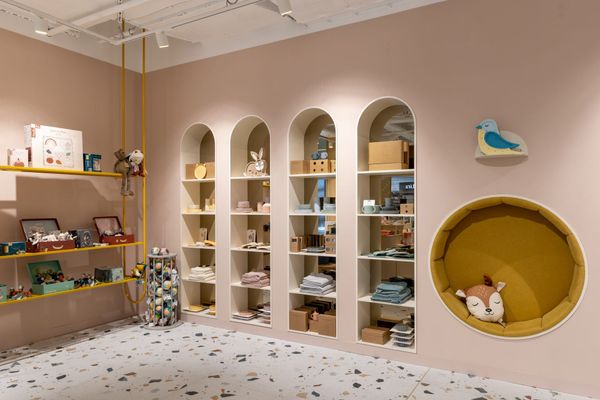As the founder of Flying Object design studio, industrial designer Ferenc Laufer has created a huge variety of products. Recently, one of his projects that has been dormant for a long time, took a physical form and is waiting to conquer the Hungarian and international market. His tile collection named “Relief” can be used to build wood-burning or electric tile stoves (and much more) that will fit in any modern home.
I got very enthusiastic when András Húnfalvi called my attention to the project of his colleague and co-founder Ferenc Laufer. I felt excited scrolling down the Instagram page of the newly created “Relief”: it wasn’t only the unconventional shapes and colors visible in photos and 3D visual designs that caught my attention, but the “choice of theme,” as well. I thought about how many (Budapest-based) apartments still have these cabinet-sized “giant beast stoves.” Most of these appliances are gas-powered (most of them may no longer work), they are like “tolerated tenants,” for example in a bourgeois salon or hall that has seen better days—people today have little to do with them: they either demolish them or live with them. And, of course, there are the countryside versions of the tiled stove: the beautiful and ornate wood-burning pieces, around which generations have grown up. The antique, genuine items that we first think of. But what if someone wants a more modern stove for their tastefully decorated living room instead of a classic one? Do you even have a variety to choose from? These and similar questions have been on my mind.
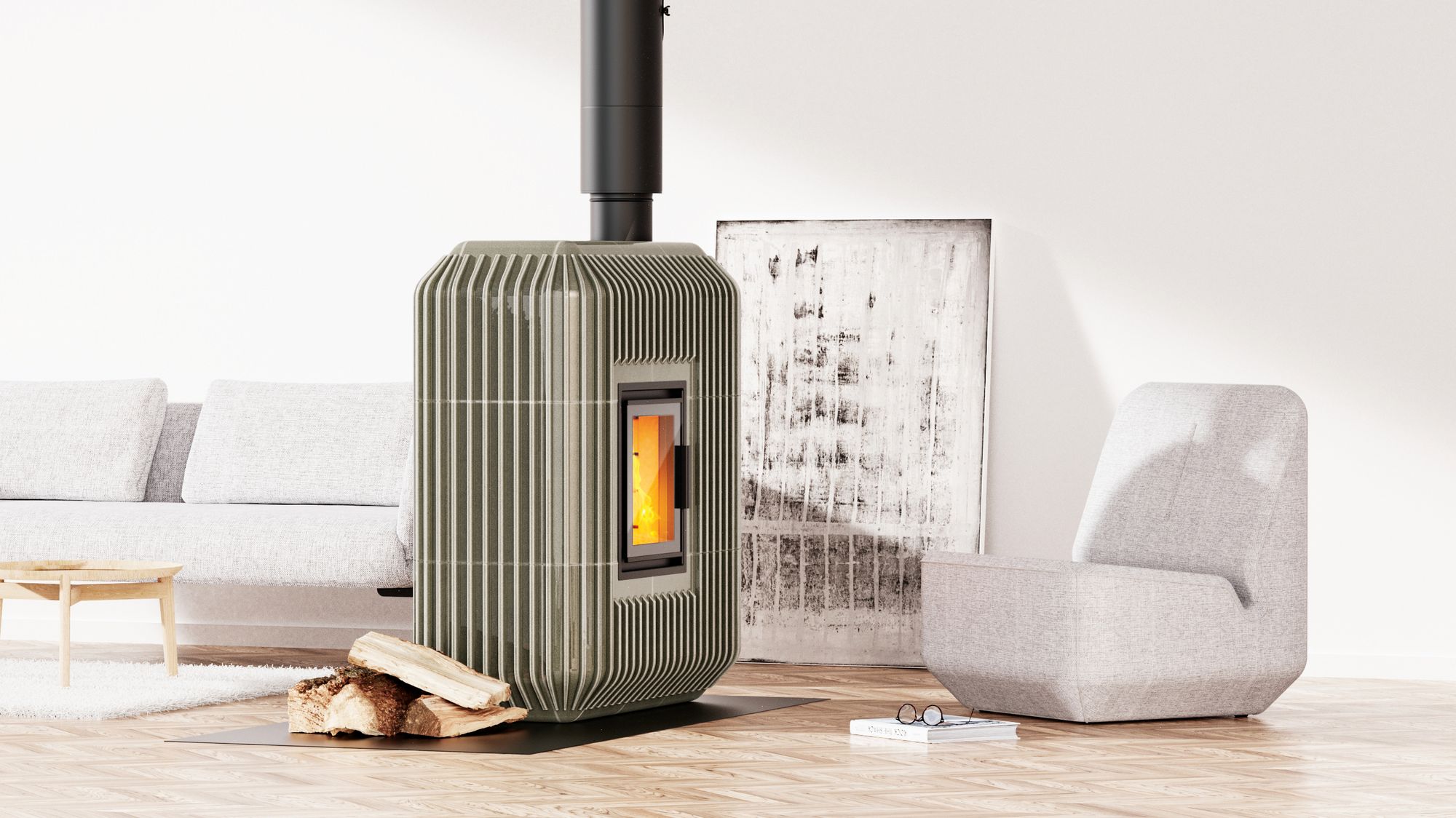
Let’s be clear: the fancy name “Relief” does not refer to the tiled stove itself, but to the tile, a both essentially and aesthetically important component of the heating system. So Feri did not design another stove, but a new tile collection to match today’s interior design trends—but he had to study the principles of the different types of stoves to create it. But let’s go back to the beginning.
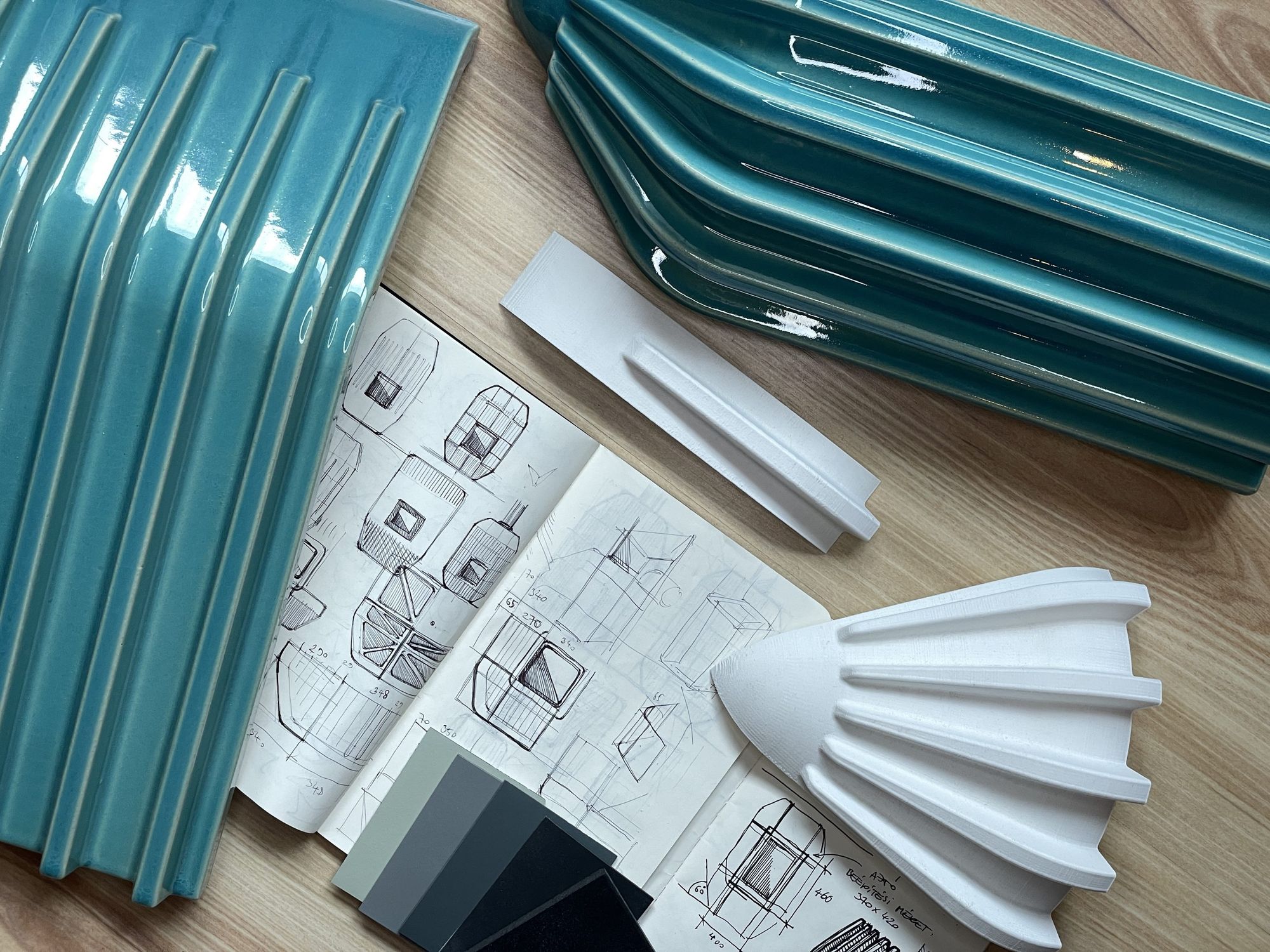

Feri’s had a tile collection project in mind for a few years: he was still an intern at Mercedes-Benz, drawing tiles for tiled stoves alongside SLK lamps. He’s always been interested in fire: “In my family, almost every household has some kind of wood-burning appliance, be it a fireplace, but mostly a tiled stove, and there were also tea stoves. Fire was therefore a very important part of my life: as a child, it was very exciting to see the adults preparing to heat. It was always the male members of the family who split the wood, and I would go with them and help them, and sometimes they would let me light it myself,” he remembers.
When he became an industrial designer, he started seeing this old family “ritual” in a different light; he approached it from the function and shape, not to mention that, though the concept of wood-burning appliances (be it a fireplace or a stove) is archaic and doubtlessly romantic, it’s still a sensitive topic because of the adverse health effects (but more on that later).
However, designs scribbled at Mercedes remained dormant, and besides many other Flying Objects projects, Feri had no time to develop them, though from time to time, he returned to tiles as side projects.
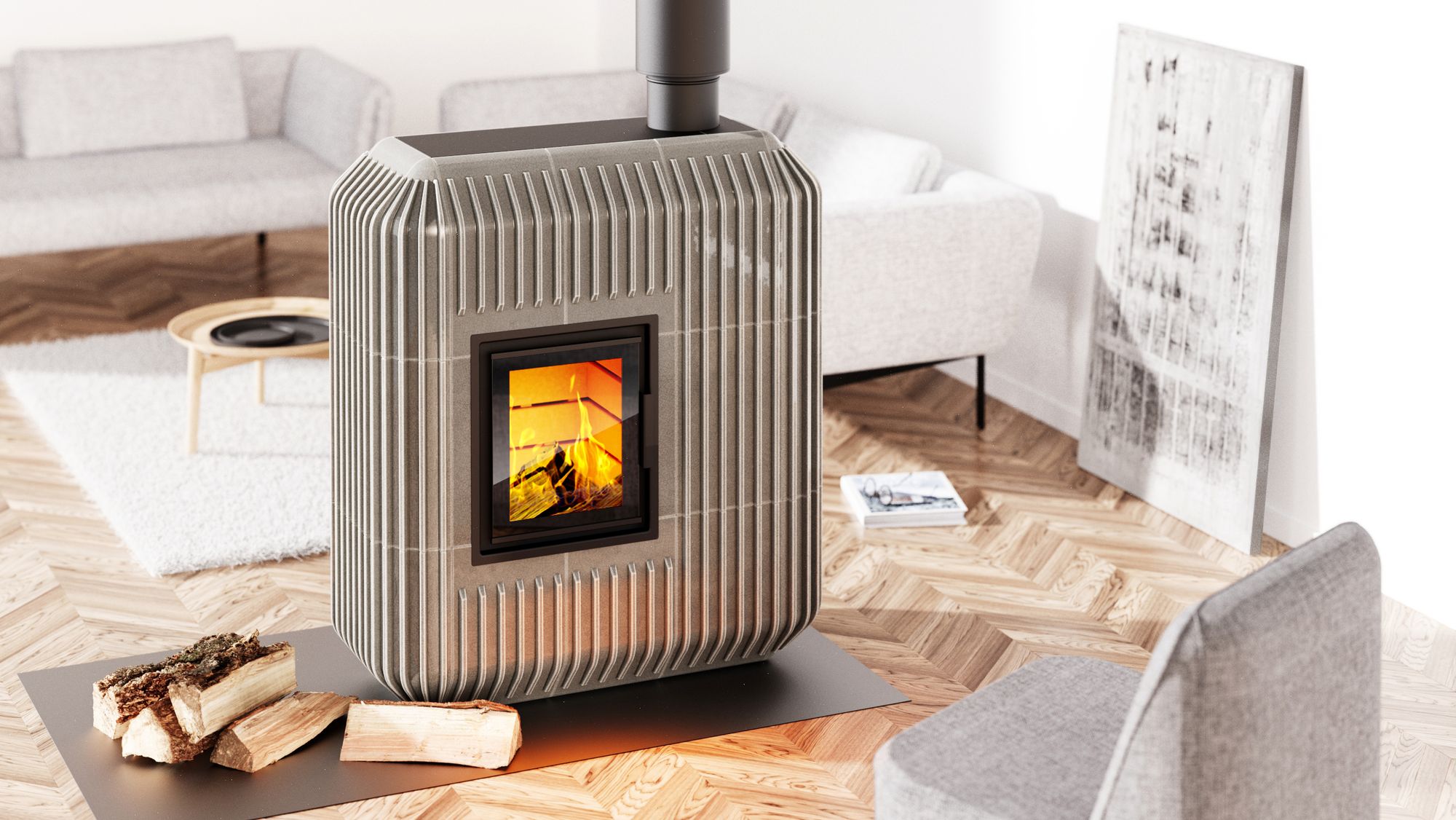
“I realized that tiles stove is basically a really good thing, as you let real fire into your apartment, which has very good effects and unique aesthetics, and it also produces a different kind of heat to central or underfloor heating. And what’s crucial and has obviously been a top priority for my grandma’s generation, it has a huge thermal storage capacity (about 8-12 hours), so it’s economical,” he points out.
He also adds that ceramics as a material choice meets both practical and aesthetic challenges, as many designers have recognized. Think of the traditional Zsolnay, but Feri also mentions a collection by Kati Zoób, and the list goes on and on, but the point is: why not “elevate” ceramics and make the most of them? In other words, let’s create a new category, leaving behind both the traditional-looking tiled stoves and the ‘blocks’ of yesteryear, and bringing a new quality and aesthetic.
“Thanks to the past forty, fifty, sixty years, tile stoves in Hungary have been more of a function-driven economical solution, but in Scandinavian countries, the aesthetics of tile stoves have been put in focus, not forgetting about the heating function, of course,” Feri points out, before we move on to the origin story of “Relief.” The appearances of tile stoves were secondary in the socialist Hungary, about 5 or 6 types of tiles were produced to choose from. But now, as Feri sees it, there is a potential audience of customers who are willing to think about traditional or even very sustainable heating systems, and it is important for them to have a stove or fireplace that fits well into their home. This is a gap that the “Relief” tile collection hopes to fill.
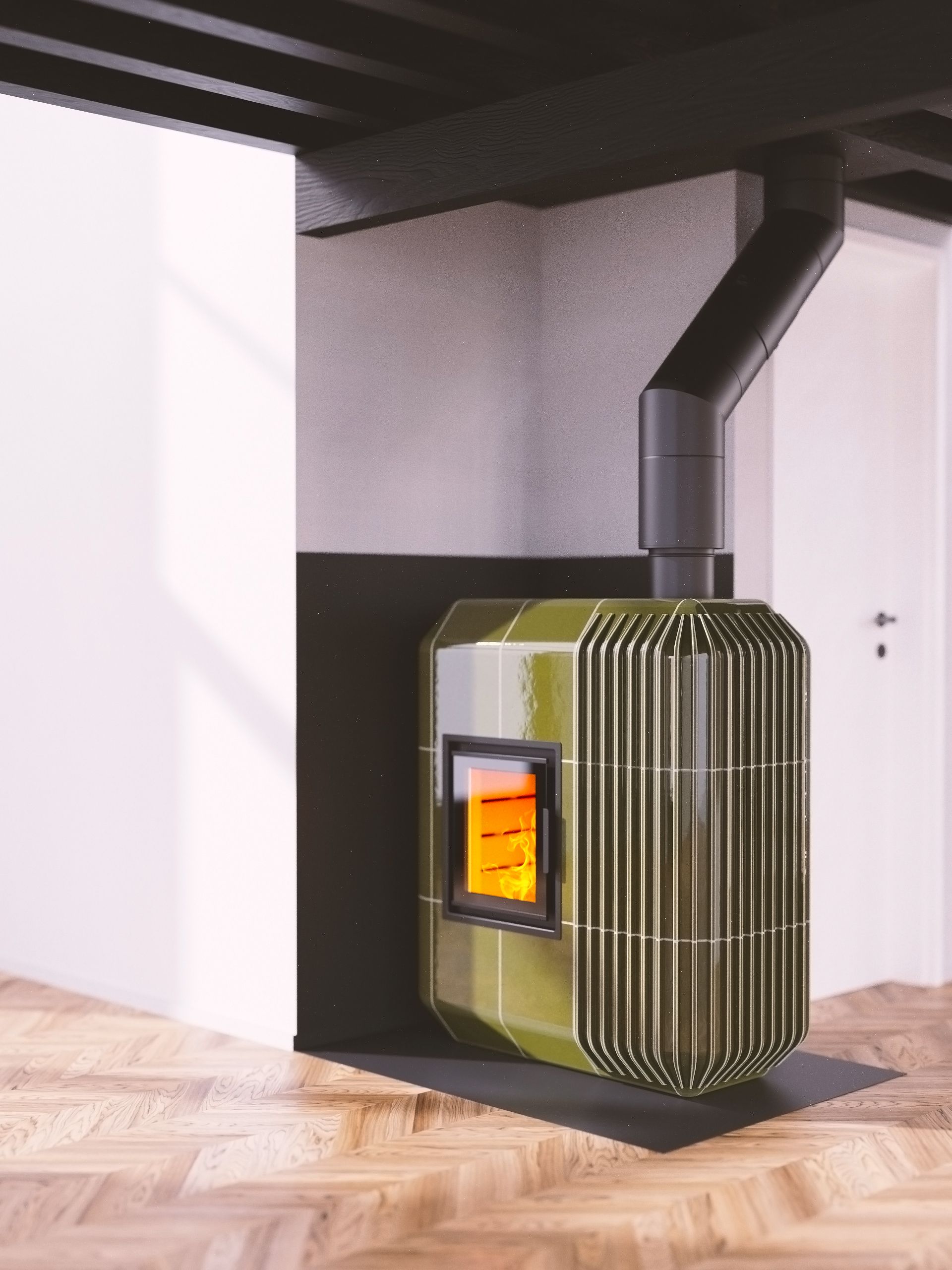
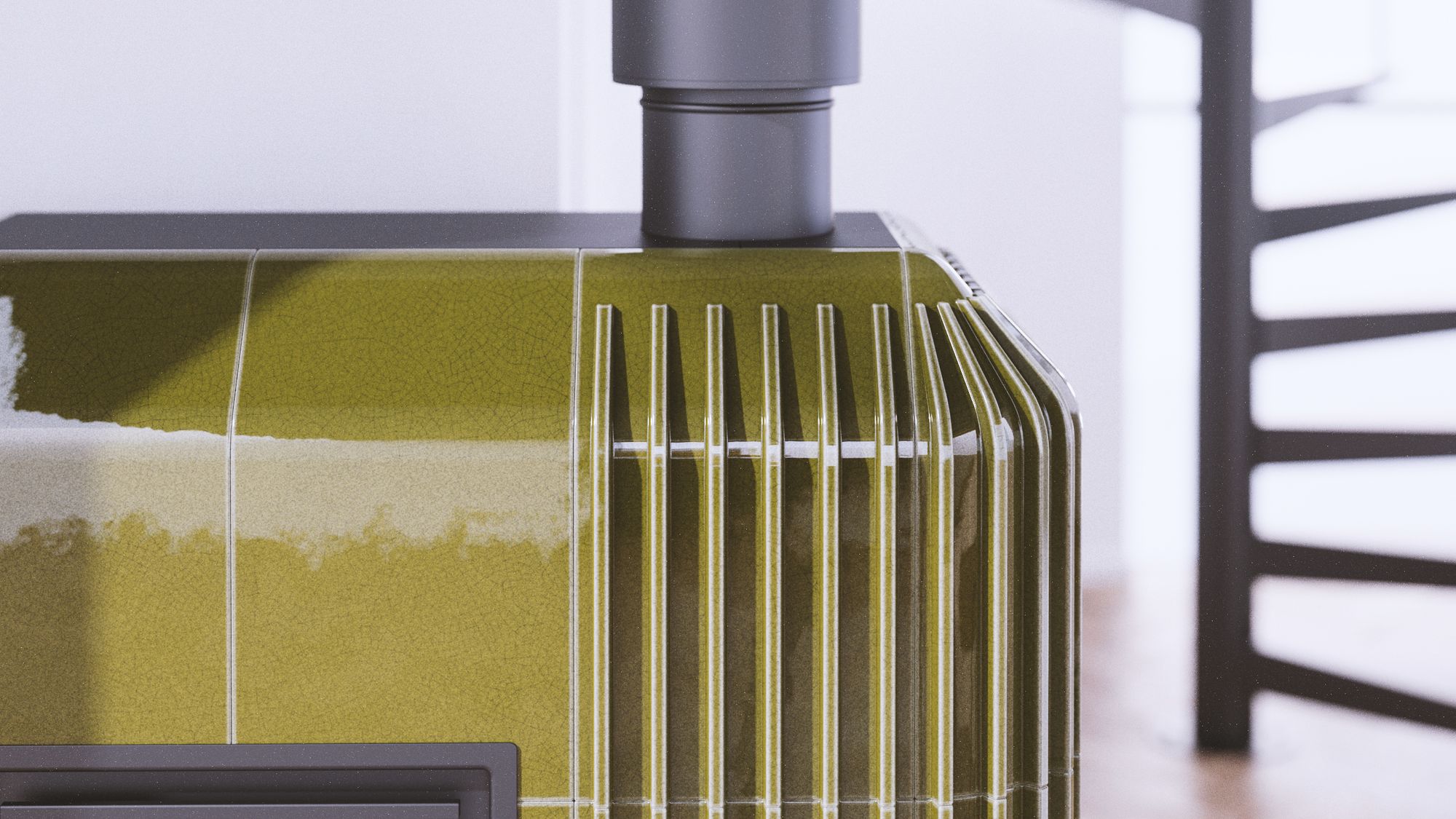
In 2016, Feri presented his dormant first designs to quite a few stove tile producing companies and manufactures in Hungary, apparently without success. Then suddenly, he received positive feedback from Szentesi Cserépkályha, who may refer to themselves as a manufacture, but they actually have an advanced machinery besides traditional technical knowledge. The reception was surprising for Feri himself, he needed a little more time. In 2019, he visited the factory in the countryside with more sophisticated designs and was able to start prototyping.
Meanwhile, Feri shows me a turquoise sample: “A negative pattern for such a rib would require more than handwork—it is milled on a CNC milling machine from 3D models. The plaster negative is made from the metal core that is milled out, and that’s how the molds are created. These tools alone have a high cost of acquisition.” He also points out that ceramics can react quite strangely, so it’s very important to have a precise manufacturer make the elements, which then have to fit together perfectly. Every millimeter counts here.
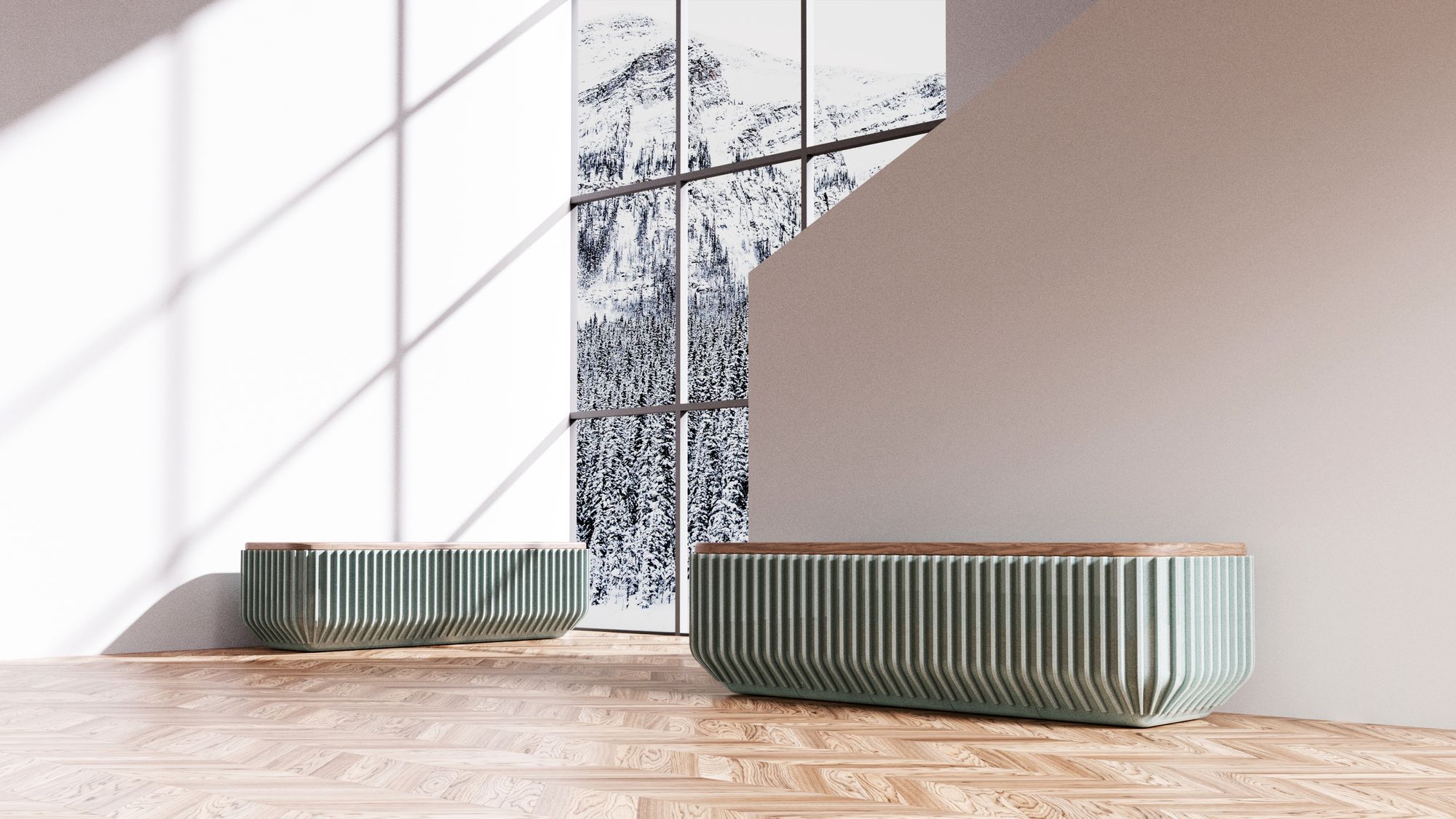
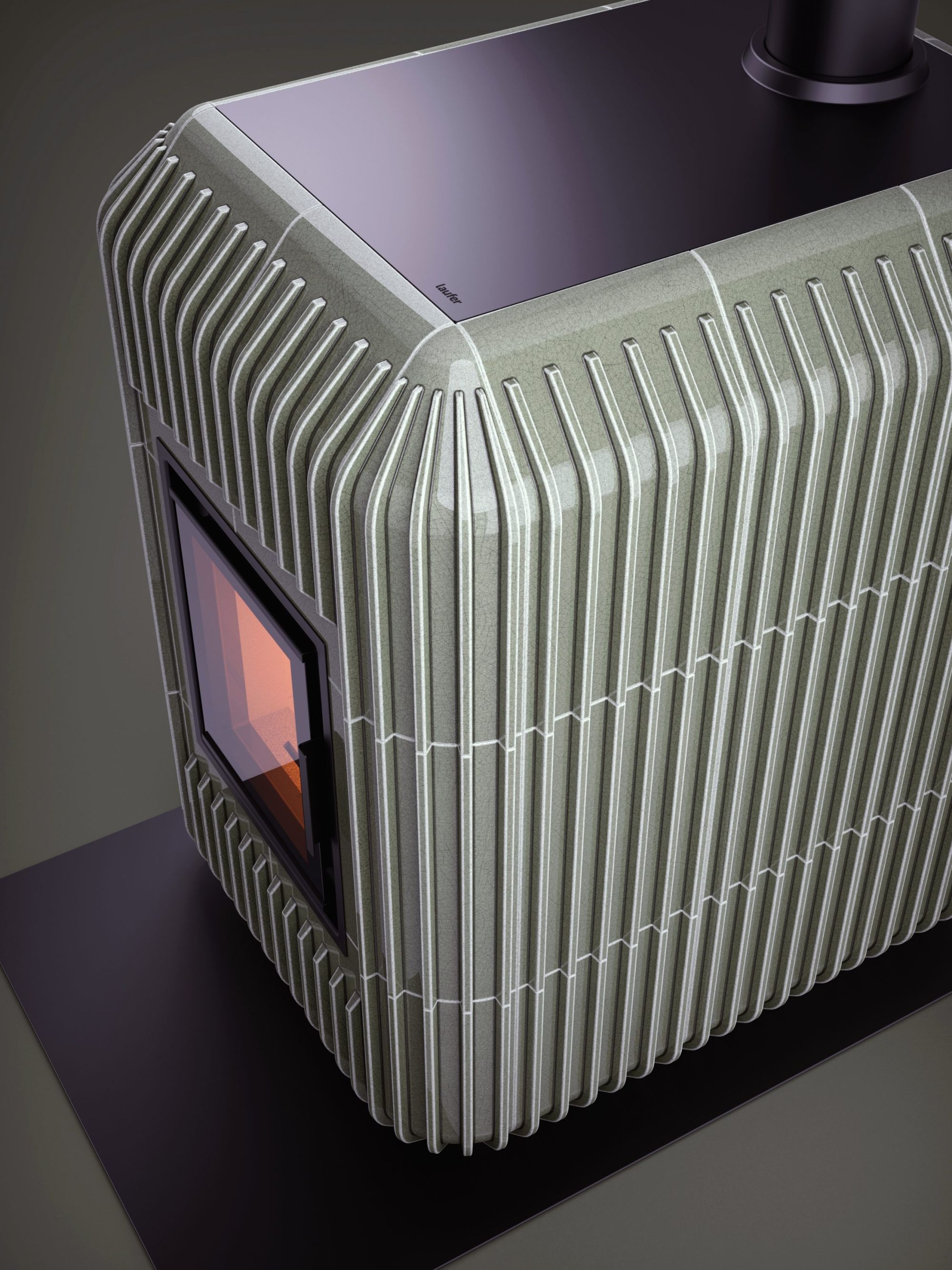
Feri’s design was based on the turquoise color, but now more subdued, earth-toned versions have also been created. At the Construma exhibition last spring, the first item was presented together with the Szentes team. “Relief” can therefore be used for classic tiled stoves and fireplaces, and also as an aesthetic cladding. In Hungary, the collection was well received at the trade fair, and together with the Szentes team, the aim is now to find a target audience and a use for the collection that will make it truly successful both in Hungary and abroad.
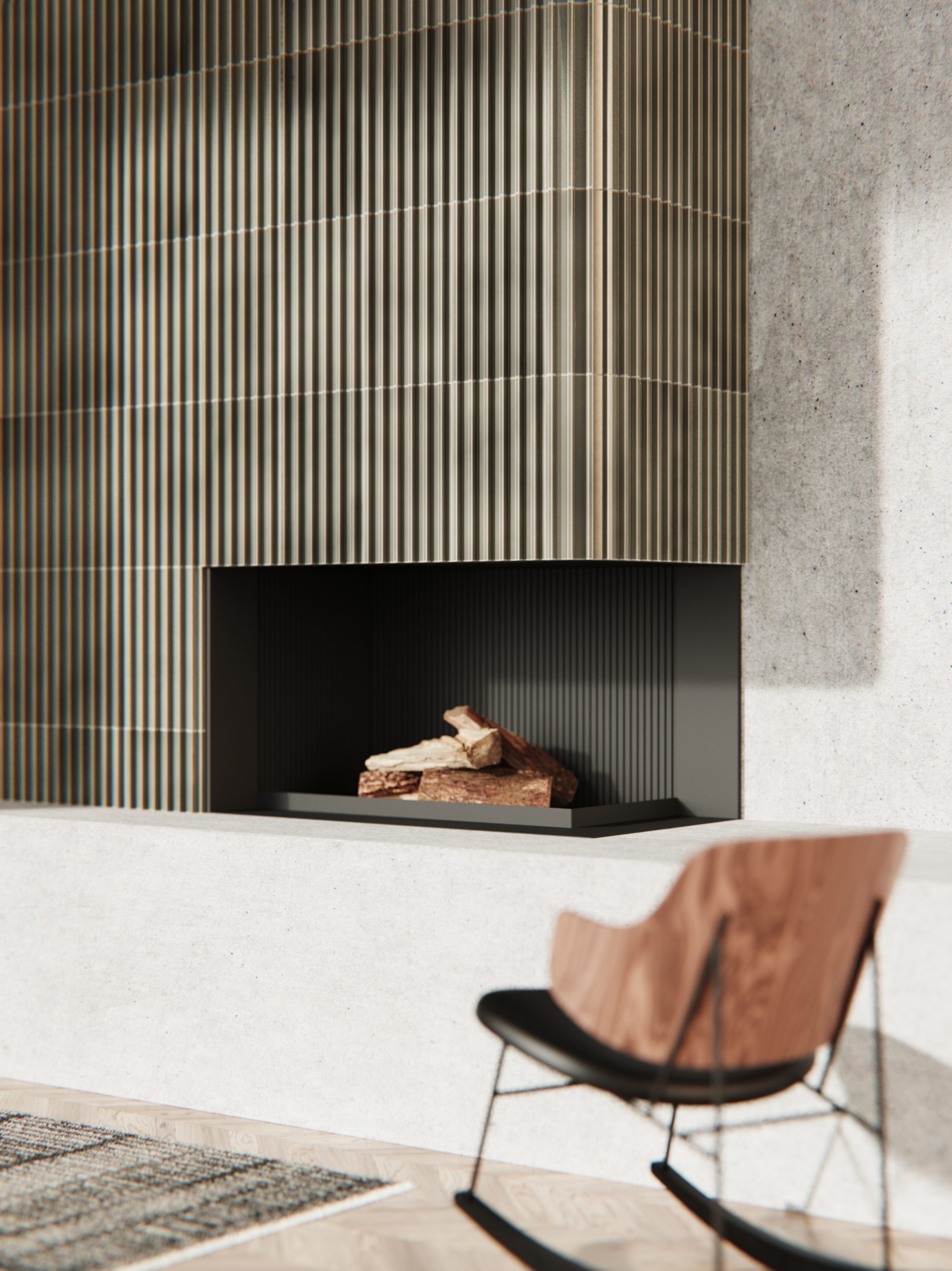
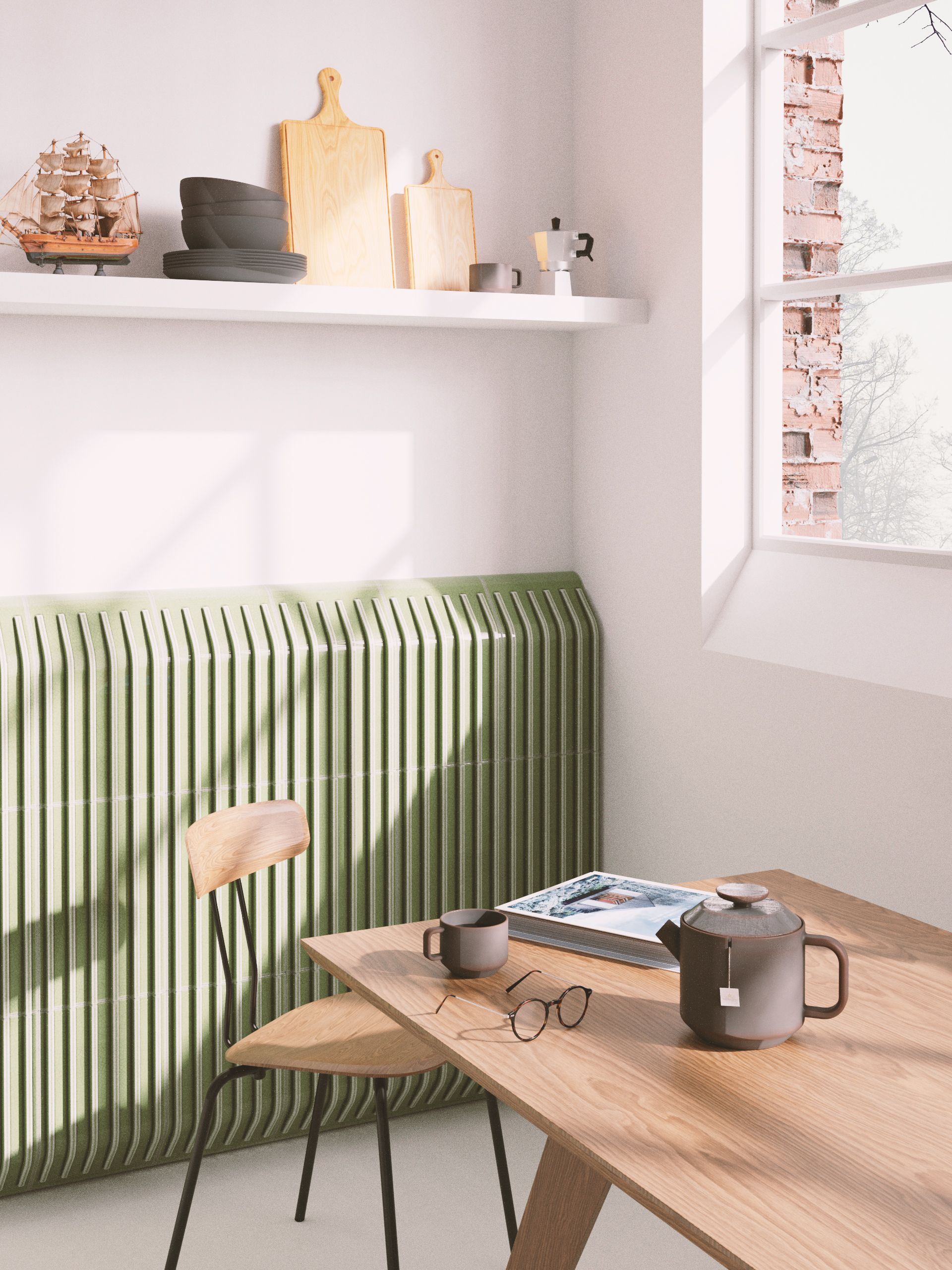
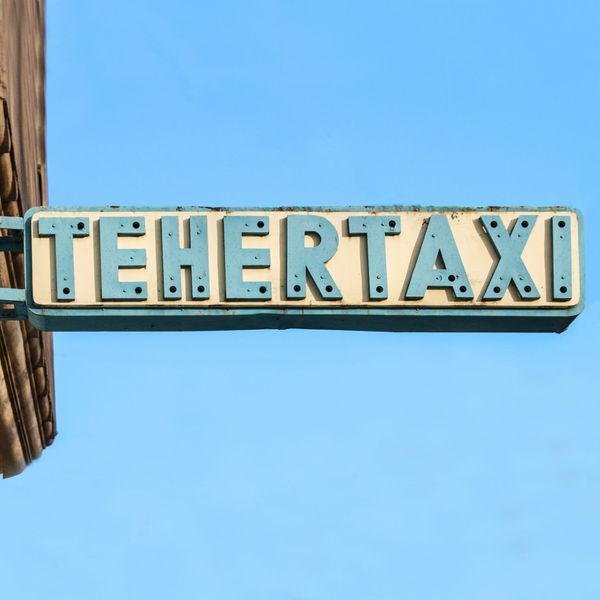
The (neon) imprints of Budapest's history in Isabel Val's photographs

Recently launched Polish design festival promotes reconstruction of our generation
